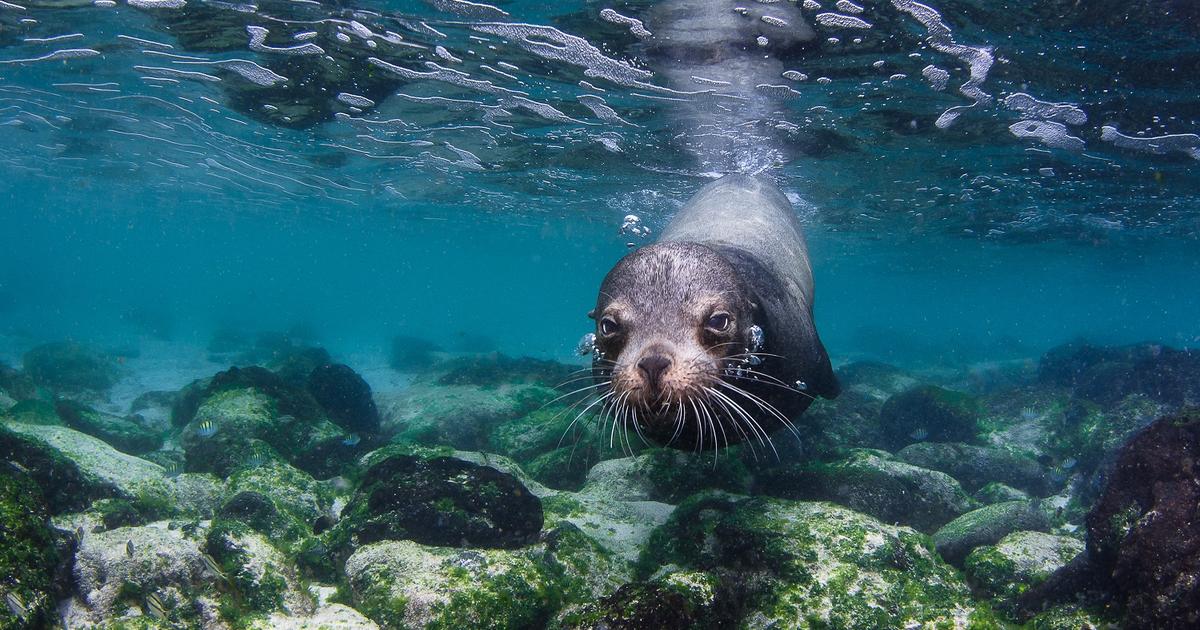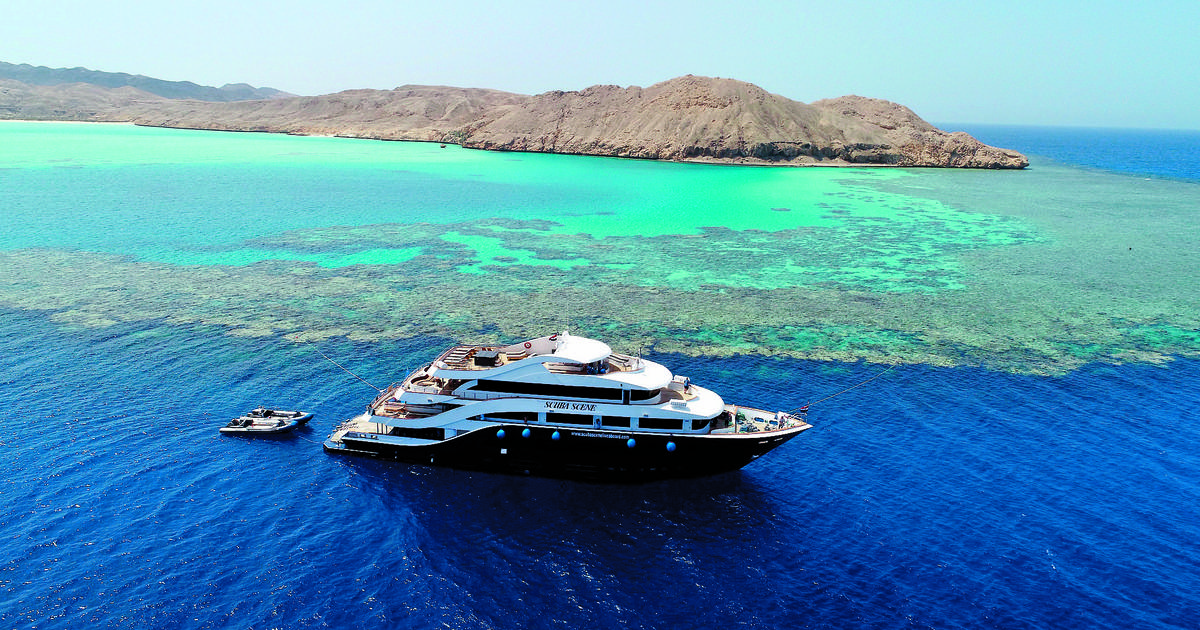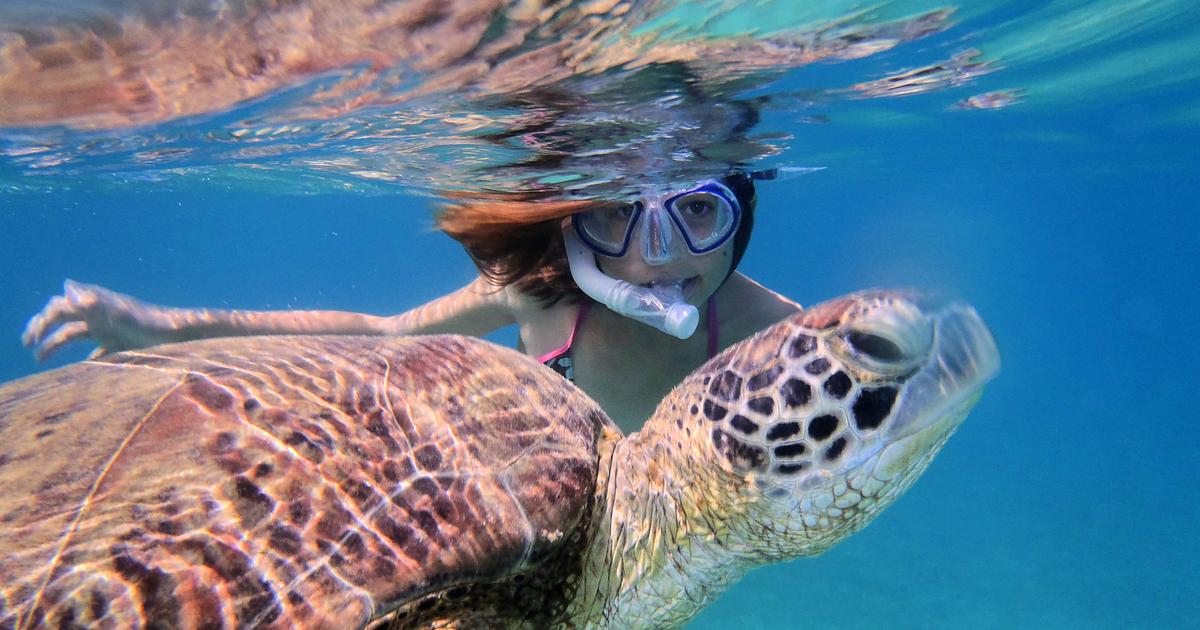Blue everywhere.
The azure blue of the sky casts its silver reflections in ultramarine waters, tinged with sapphire and cobalt.
Waves crash over sharp shoals.
We are in the middle of nowhere.
The coasts of the South American continent are far, so far, 24 or 36 hours away.
Here, diving does not suffer from any improvisation.
No tropical beach where to flop in case of a glitch.
No rescuer or helicopter in case of decompression sickness.
You have to jump into these inhospitable waters knowing that the currents are sometimes violent.
And yet, these spots are the Grail of any experienced diver.
Because ocean currents transport nutrients, a food source for large marine animals.
Diving on these World Heritage sites is done on board cruise ships (5000 to 8000 € with the flight) where safety is the number 1 priority.
Submersible radio and beacon, whistle, mirror are mandatory equipment so that divers can be spotted if the strength of the currents takes them further than expected.
Under water ?
An emotional jackpot on these four valuable sites we have selected.
Read alsoThe top 10 of the most beautiful dives in the world
Socorro (Mexico)
Oceanic manta rays can measure up to 6 meters in wingspan.
Adobe Stock
The Revillagigedo Archipelago is renowned for ballets with oceanic manta rays (
Mobula birostris
).
With an impressive wingspan (up to 6 meters), they swirl in planktonic waters to feed.
Curious, they willingly approach divers whom they seduce with their gaze.
Crunchy, like turtles, gray reef sharks, silky sharks, Galapagos sharks.
More random: the passage of dolphins or whale sharks.
World Heritage since 2016. Four islands: San Benedicto, Socorro, Roca Partida and Clarión representing the peaks of volcanoes emerging from the ocean.
Go with?
Ultramarine.
When ?
From November to June.
The plus:
from Cabo San Lucas, home port of the boats, possible extension to La Paz and the Sea of Cortez to dive with the sea lions.
Read alsoManta rays, sperm whales or crocodiles: 6 diving trips to observe the lords of the oceans
Cocos Island (Costa Rica)
A hammerhead shark from Costa Rica.
Adobe Stock
An image engraved in the memory, that of hundreds of scalloped hammerhead sharks (
Sphyrna lewini
) gathered in a compact block and evolving peacefully in the current.
Impossible to remain insensitive to the beauty and finesse of these sharks.
Manta and mobula rays, schools of eagle rays, gray and silky sharks, sailfish and dolphins flourish around this national park.
27 species of endemic fish including the red-lipped batfish (
Ogcocephalus porrectus)
have been recorded there.
World Heritage since 1997. A national park, it is the only island in the eastern tropical Pacific with a tropical rainforest.
Visits are restricted.
Go with?
H2O Travel.
When ?
From June to November, more rough seas but ideal for large gatherings of sharks.
Those who suffer from seasickness will prefer the dry season, December-May.
The plus:
the trip of a lifetime no doubt.
A daydream that satisfies the most demanding of divers.
To be combined with a stay on land to discover the beauties of the continental jungle.
Malpelo (Colombia)
The timid fierce shark, accustomed to deep waters.
Sandra Bessudo
Steep walls, caves, schools of scalloped hammerhead sharks, tuna and trevallies, rays of all kinds, swirls of fish and large predators.
The rich waters of Malpelo attract poachers and if the territory were not protected, there would probably be nothing left.
With luck, the possibility of finding the shy ferocious shark (
Odontaspis ferox
), which points its snout outside its usual -1000 meters when the waters are cool.
World Heritage since 2006. The 350 ha of the island are protected as well as the surrounding marine area (857,150 ha).
Go with?
Aquarev.
When ?
All year.
Best season for hammerhead sharks: January to May;
silky sharks, May to July;
whale shark, July to September.
The plus:
if the trip is guided by Sandra Bessudo, Franco-Belgian born and raised in Colombia who moved heaven and earth to have the area classified, the diver is sure not to miss anything.
Read alsoFive diving spots to swim with sharks
The Galapagos (Ecuador)
Wall of fish at the entrance to the shark cave at the Daphne site.
GREG LECOEUR / Le Figaro Magazine
At the confluence of three ocean currents, the nineteen Galapagos islands are so isolated (1000 km from the coast) that the species that live there are often endemic.
2,909 marine species have been identified with 18.2% endemism.
Diving alongside an iguana and sea lions, but also manta rays and sharks, is possible in this incredible territory where an unparalleled diversity of animals rubs shoulders.
The water is cool (Humboldt current) from May to December (20°C), bring a semi-waterproof suit.
World heritage since 1978. Nineteen islands, five of which are inhabited (access by plane) and the marine reserve of 38,000 km2 which surrounds them constitute a living laboratory of evolution absolutely unique in the world.
Go with?
C6Bo.
When ?
All year.
Best season for hammerhead and manta sharks: December to May.
The plus:
bring
Voyage of the Beagle
, by Charles Darwin (1839), to reread his journey which then led him to state his theory of Evolution.
On dry land, discovery of 58 species of birds, 28 of which are endemic.





/cloudfront-eu-central-1.images.arcpublishing.com/prisa/CY2A26MEDVGSFEWPX5DBVG5BFQ.jpg)









